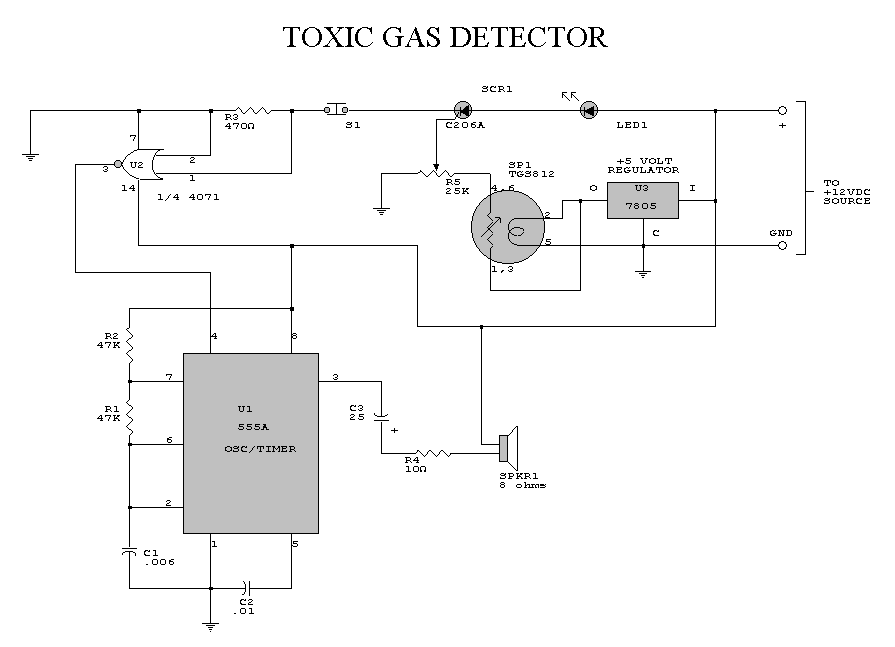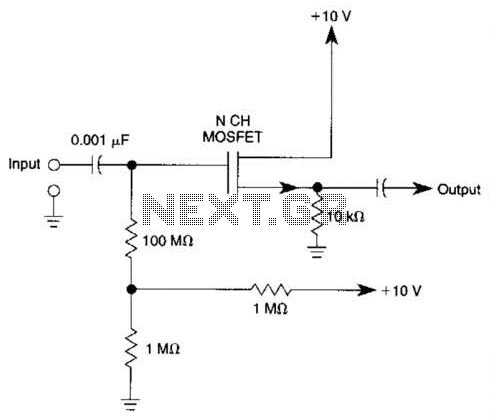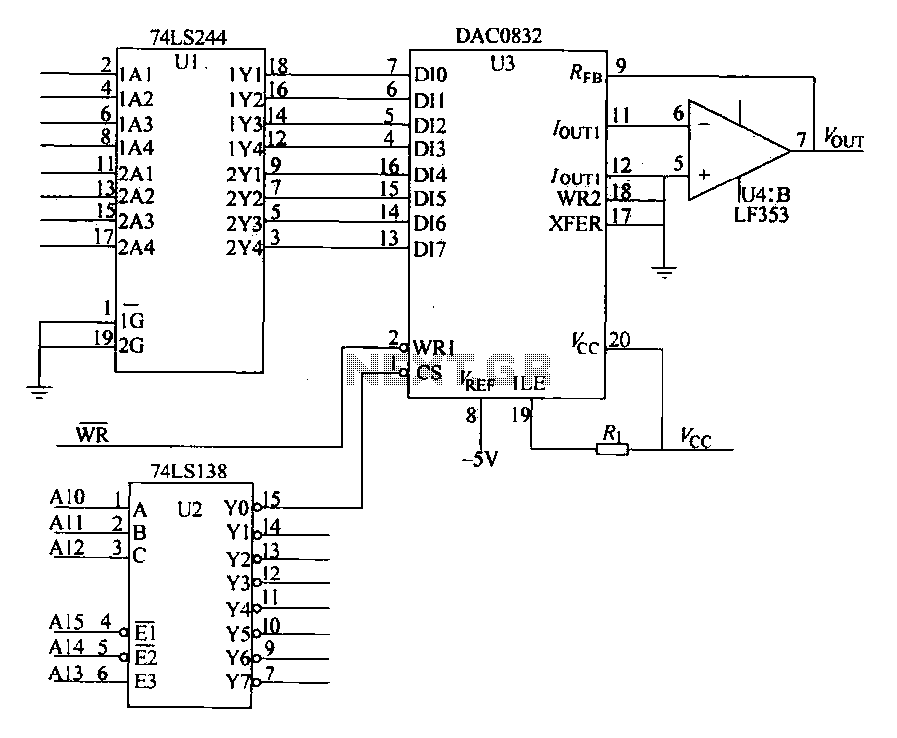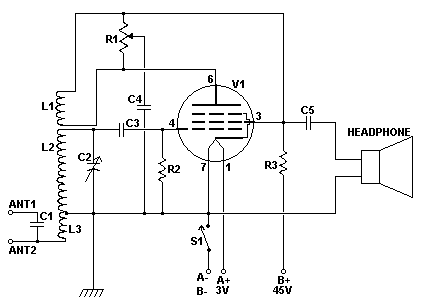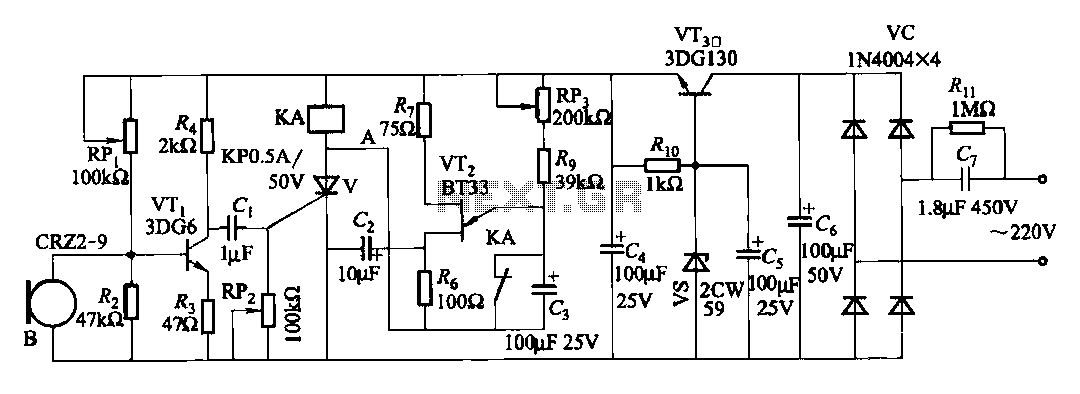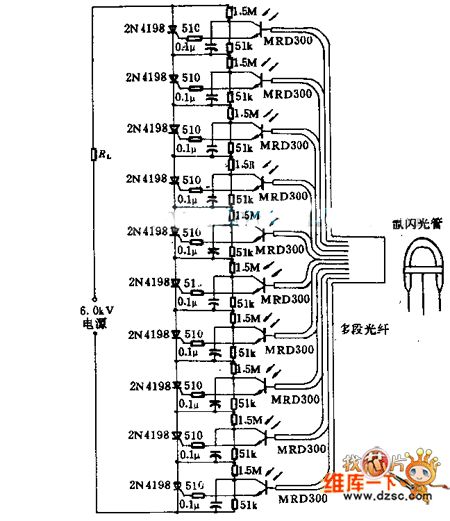
TA-1500 fever amplifier circuit
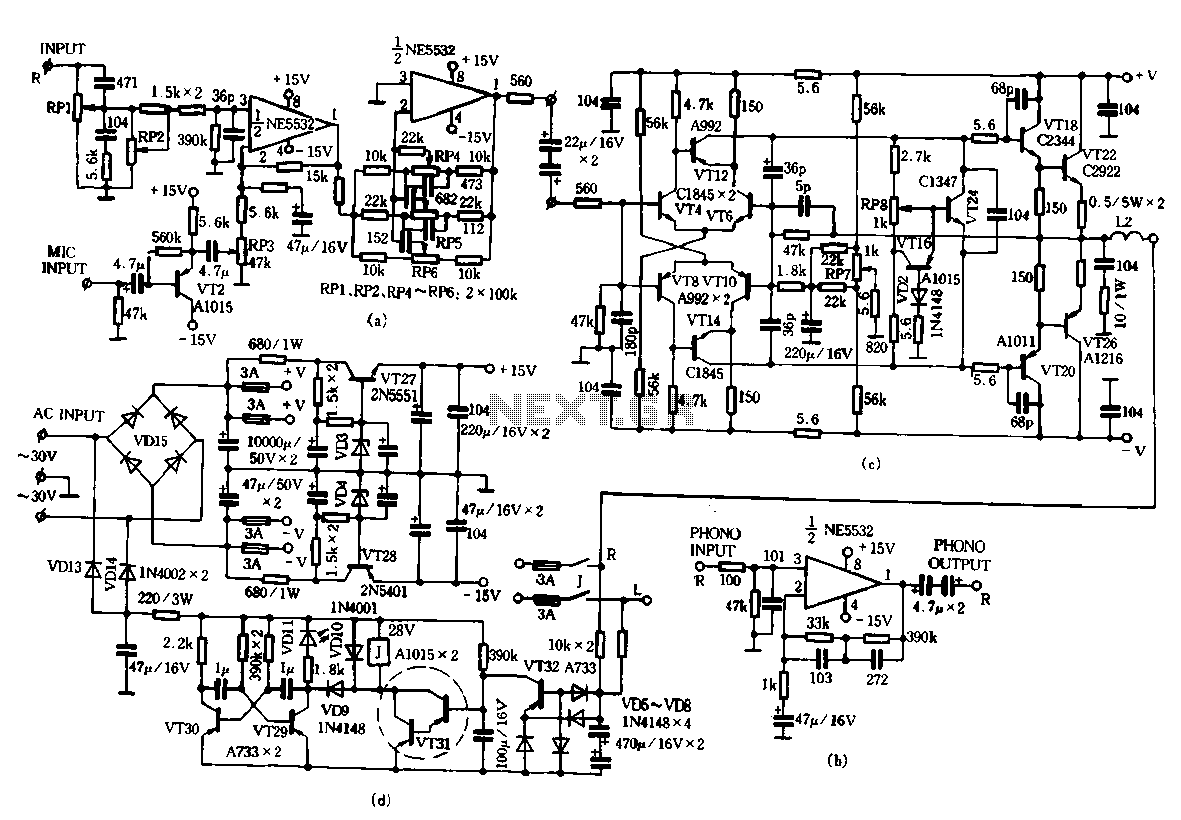
Only the R channel is shown, with the original reference PCB label. Figure (a) illustrates the front tone circuit, which consists of a common negative feedback operational amplifier in an RC circuit configuration. The microphone signal is amplified by VTz, and after passing through VR3, it feeds into the negative input of IC1, where the signal is mixed with the main station. The output from pin O of IC1 is sent to PR1 and PR3, respectively, to control the volume of the microphone signal and accommodate different signal sources. The tone negative feedback network employs a common type that allows for adjustments in high, medium, and bass frequencies, though the principle is not detailed. Figure (b) depicts an independent pre-phono input circuit, IC3, along with a balanced network structure, which is determined by actual installed capacity. Figure (c) presents the final amplifier circuit, which is a typical Class A dynamic bias fully symmetrical amplifier. This amplifier is characterized by its high-performance capabilities. Proper component selection, installation, and commissioning can yield satisfactory sound quality. The complementary differential amplifier circuit, formed by VT4, VT6, and VT8, achieves a very high common mode rejection ratio and a wide dynamic range. Ports VT12 and VT14 are ingeniously connected across the two outputs of the differential circuit to enhance the signal-to-noise ratio and dynamic circuit voltage symmetry. The output stage is driven by VT18 and VT20. The power output from VT22 and VT26 is complemented by the coincident bias circuit formed by RP8, VT16, and VT24, which features low output resistance. This allows the base AC voltage drop across VT18 and VT20 to remain close to zero. PR8 is used to adjust the Vce of VT24 to control the quiescent current of the final stage, ensuring it operates in a dynamic state. VT24, VT22, and VT26 are mounted on a heat sink for temperature compensation. The adjustment made by VR7 maintains the midpoint of the entire circuit at zero potential to accommodate fluctuations in discrete transistors and power supply.
The described circuit consists of several key sections that work together to achieve high-quality audio amplification. The front tone circuit is designed to manipulate the audio signal's frequency response, allowing for adjustments in treble, midrange, and bass frequencies. The operational amplifier configuration ensures that the microphone signal is effectively amplified, providing a clear input for further processing.
The pre-phono input circuit (IC3) serves to prepare the audio signal for amplification, ensuring that it is at an appropriate level for the subsequent stages. This section is crucial for maintaining signal integrity and preventing distortion.
The final amplifier stage is a Class A design, known for its linearity and low distortion characteristics. This amplifier utilizes a fully symmetrical design, which helps in balancing the output and reducing any potential noise. The complementary differential amplifier configuration enhances the circuit's performance by improving the common mode rejection ratio, which is essential for maintaining audio fidelity in the presence of noise.
The output stage, driven by VT18 and VT20, is designed to provide sufficient power while minimizing distortion. The coincident bias circuit ensures that the output transistors operate efficiently, maintaining a low output resistance that is vital for driving the load effectively. The heat sink mounted on key transistors provides thermal stability, preventing overheating and ensuring reliable operation.
The overall design emphasizes the importance of component selection and circuit layout, as these factors significantly influence the sound quality and performance of the amplifier. The adjustments provided by VR3, PR1, PR3, and PR8 allow for fine-tuning of the audio output, accommodating various signal sources and listening preferences. This comprehensive approach to design and functionality ensures that the final product meets high standards of audio performance.(Only shown the R channel, the original reference PCB label) o Figure (a) for the front tone circuit. The RC circuit genus common negative feedback operational amplifier. Microphone signal amplification by VTz after the VR3 fed ici negative input signal is mixed with the main station after the 1C1 O pin output o PR1, PR3, respectively, to control the main signal, the volume of the microphone signal to accommodate different signal sources. Tone negative feedback network Yizhu common type, high, medium and bass respectively adjusted, the principle is omitted.
Figure (b) is an independent pre-phono input circuit IC3 and balanced network structure, the actual installed capacity of the heart, as the need to decide FIG. (C) for the final amplifier circuit. This is typical of the new Class A dynamic bias fully symmetrical amplifier. This is a class with a fever the level of the final amplifier. Proper component selection, correct installation and commissioning, the sound quality is quite capable of satisfying.
VT4.VT6 VT8, fully symmetrical mirror VT10 constitute complementary differential amplifier circuit has a very high common mode rejection ratio and a wide dynamic range of port VT12.VT14 are cleverly connected across the two outputs of the differential circuit to further improve the signal to noise ratio and dynamic circuit voltage symmetrical form a full range oVT18.VT20 drive class. Power output from the VT22, VT26 complete O RP8.VT16, VT24 coincident bias circuit, with its low output resistance, so drive class VT18, VT20 base AC voltage drop close to zero; PR8 for adjusting the VT24 Vce to control end-stage stationary Harcourt current, final work in a dynamic state of the CPI.
VT24 and VT22, VT26 with mounted on a heat sink for temperature compensation tracking 6 adjusted VR7 make the whole circuit midpoint Paul held at zero potential to accommodate discrete transistors and power fluctuations mouth
The described circuit consists of several key sections that work together to achieve high-quality audio amplification. The front tone circuit is designed to manipulate the audio signal's frequency response, allowing for adjustments in treble, midrange, and bass frequencies. The operational amplifier configuration ensures that the microphone signal is effectively amplified, providing a clear input for further processing.
The pre-phono input circuit (IC3) serves to prepare the audio signal for amplification, ensuring that it is at an appropriate level for the subsequent stages. This section is crucial for maintaining signal integrity and preventing distortion.
The final amplifier stage is a Class A design, known for its linearity and low distortion characteristics. This amplifier utilizes a fully symmetrical design, which helps in balancing the output and reducing any potential noise. The complementary differential amplifier configuration enhances the circuit's performance by improving the common mode rejection ratio, which is essential for maintaining audio fidelity in the presence of noise.
The output stage, driven by VT18 and VT20, is designed to provide sufficient power while minimizing distortion. The coincident bias circuit ensures that the output transistors operate efficiently, maintaining a low output resistance that is vital for driving the load effectively. The heat sink mounted on key transistors provides thermal stability, preventing overheating and ensuring reliable operation.
The overall design emphasizes the importance of component selection and circuit layout, as these factors significantly influence the sound quality and performance of the amplifier. The adjustments provided by VR3, PR1, PR3, and PR8 allow for fine-tuning of the audio output, accommodating various signal sources and listening preferences. This comprehensive approach to design and functionality ensures that the final product meets high standards of audio performance.(Only shown the R channel, the original reference PCB label) o Figure (a) for the front tone circuit. The RC circuit genus common negative feedback operational amplifier. Microphone signal amplification by VTz after the VR3 fed ici negative input signal is mixed with the main station after the 1C1 O pin output o PR1, PR3, respectively, to control the main signal, the volume of the microphone signal to accommodate different signal sources. Tone negative feedback network Yizhu common type, high, medium and bass respectively adjusted, the principle is omitted.
Figure (b) is an independent pre-phono input circuit IC3 and balanced network structure, the actual installed capacity of the heart, as the need to decide FIG. (C) for the final amplifier circuit. This is typical of the new Class A dynamic bias fully symmetrical amplifier. This is a class with a fever the level of the final amplifier. Proper component selection, correct installation and commissioning, the sound quality is quite capable of satisfying.
VT4.VT6 VT8, fully symmetrical mirror VT10 constitute complementary differential amplifier circuit has a very high common mode rejection ratio and a wide dynamic range of port VT12.VT14 are cleverly connected across the two outputs of the differential circuit to further improve the signal to noise ratio and dynamic circuit voltage symmetrical form a full range oVT18.VT20 drive class. Power output from the VT22, VT26 complete O RP8.VT16, VT24 coincident bias circuit, with its low output resistance, so drive class VT18, VT20 base AC voltage drop close to zero; PR8 for adjusting the VT24 Vce to control end-stage stationary Harcourt current, final work in a dynamic state of the CPI.
VT24 and VT22, VT26 with mounted on a heat sink for temperature compensation tracking 6 adjusted VR7 make the whole circuit midpoint Paul held at zero potential to accommodate discrete transistors and power fluctuations mouth
